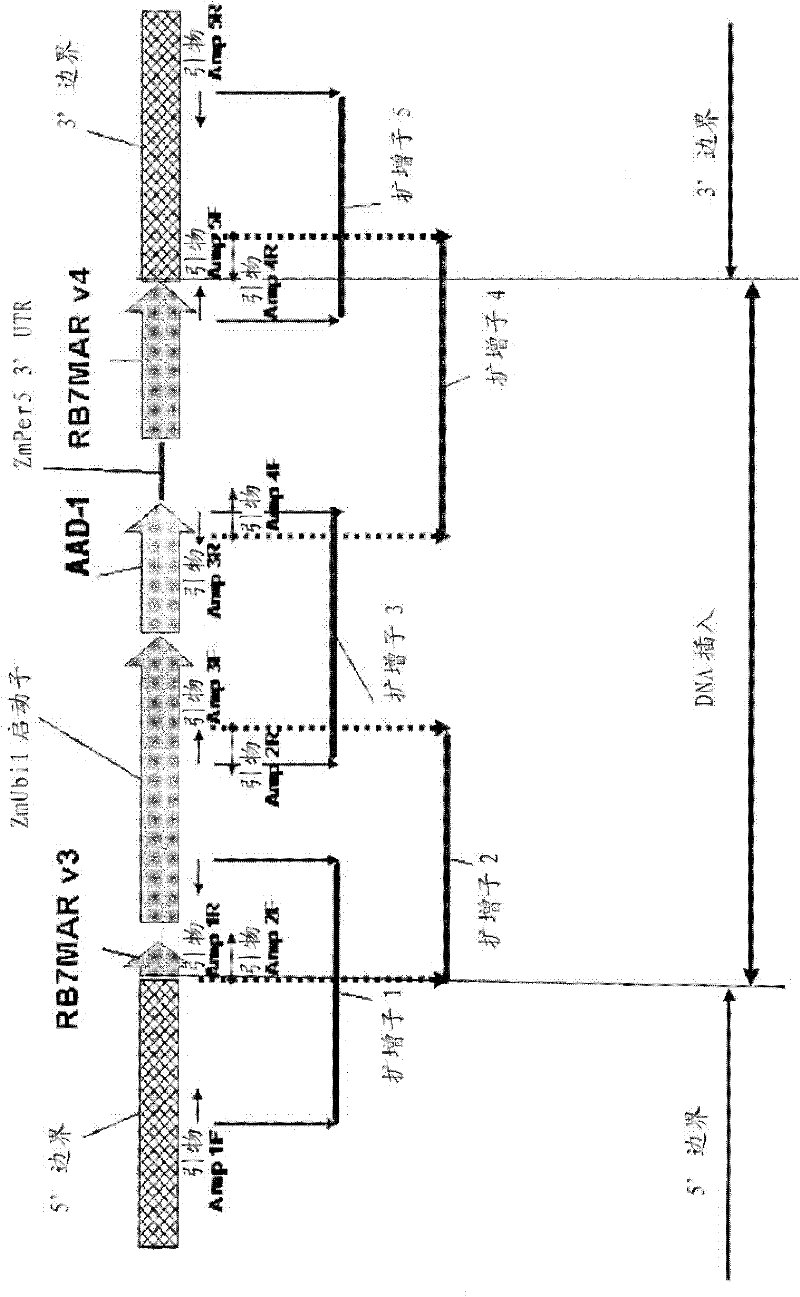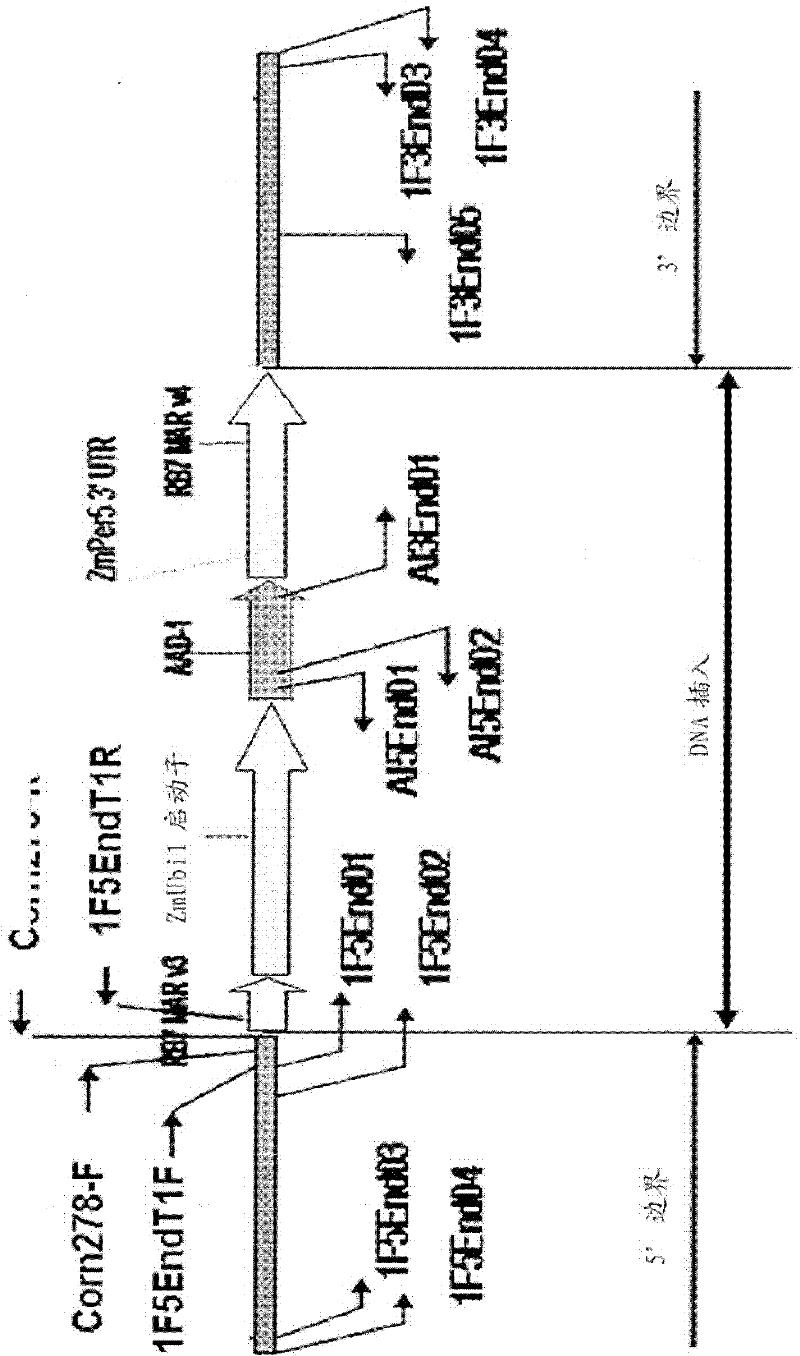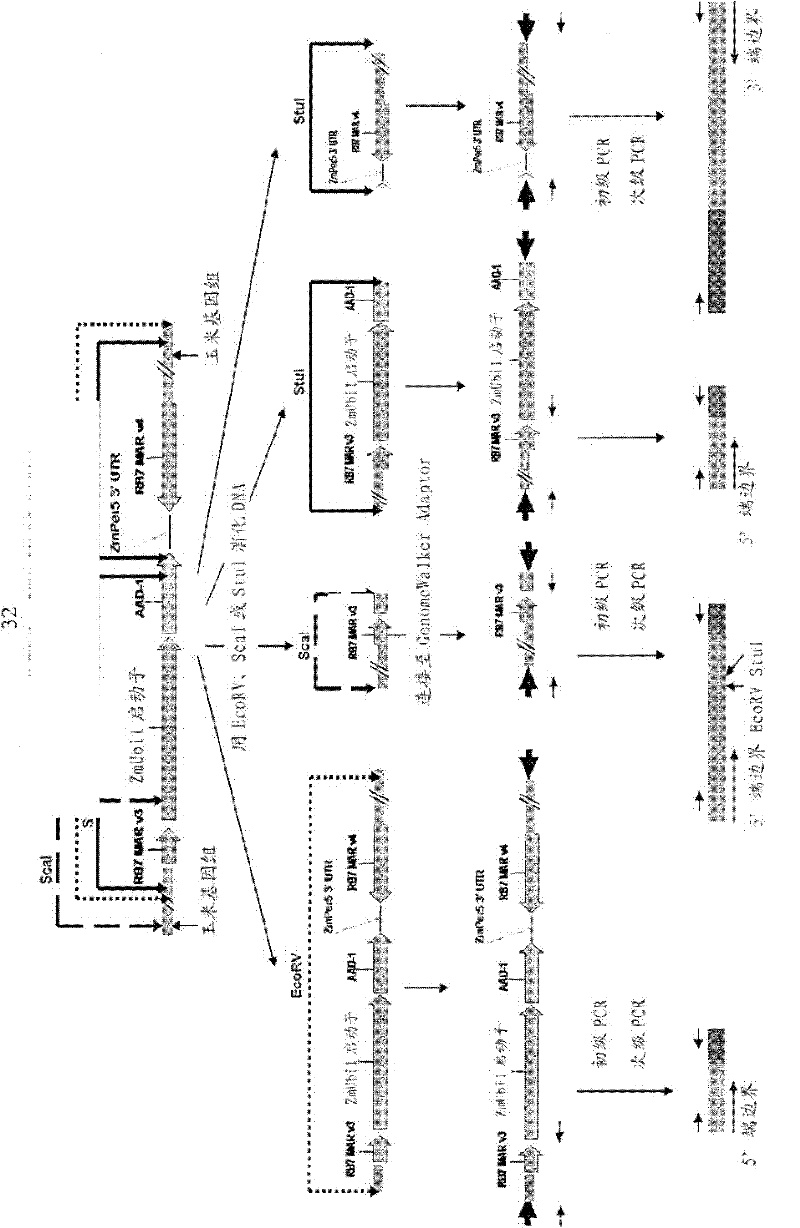Detection of AAD-1 event DAS-40278-9
A technology of AAD-1 and events, applied to the determination/testing of microorganisms, enzymes, biochemical equipment and methods, etc., which can solve the problems of not showing the use of reference genes, etc.
- Summary
- Abstract
- Description
- Claims
- Application Information
AI Technical Summary
Problems solved by technology
Method used
Image
Examples
Embodiment 1
[0097] Example 1: Event-specific Taqman assays
[0098]An event-specific Taqman assay was developed to detect the presence of maize event DAS-40278-9 and determine the zygosity status of plants in breeding populations. To develop event-specific assays, specific Taqman primers and probes were designed based on the DNA sequence located at the junction of the 5' insertion plant. For specific detection of DAS-40278-9, a 73-bp DNA fragment spanning the 5' integration junction was amplified using two specific primers. Amplification of this PCR product was measured by a target-specific MGB probe synthesized by Applied Biosystems containing a FAM reporter at its 5' end. The specificity of this Taqman assay for AAD-1 maize event DAS-40278-9 was tested against 16 different AAD-1 maize events and double-stranded forms of non-transgenic maize cultivars with a maize-specific endogenous reference gene, invertase .
Embodiment 11
[0099] Example 1.1: gDNA isolation
[0100] gDNA samples from 16 different AAD-1 maize events and non-transgenic maize varieties were tested in this study. Two methods, Qiagen kit or CTAB, were used to extract gDNA. For the extraction of gDNA samples with the Qiagen preparation kit, eight fresh maize leaves were used for gDNA extraction according to the protocol of the modified Qiagen DNeasy 96 Plant Kit. For gDNA samples extracted using the CTAB procedure, approximately 0.3 g of lyophilized leaf tissue was used following the protocol from Permingeat et al., 1998. gDNA was quantified using the Pico Green method according to the vendor's instructions (Molecular Probes, Eugene, OR). The gDNA samples were diluted with DNase-free water to obtain a concentration of 10 ng / μL for the purpose of this study.
Embodiment 12
[0101] Example 1.2: Taqman Assay and Results
[0102] Specific Taqman primers and probes were designed for the DAS-40278-9 event-specific Taqman assay. These reagents can be used to detect AAD-1 corn event DAS-40278-9 under the conditions listed in the table below. Table 1 lists the primer and probe sequences developed specifically for the detection of event DAS-40278-9.
[0103] Table 1: PCR Primers and Probes
[0104]
[0105]
[0106] Multiplex PCR conditions for amplification are as follows: 1X PCR buffer, .5-2.5mM MgCl 2 , .2mM dNTP, 0.2μM Primer Corn-278-F, 0.2μM Primer Corn-278-R, 0.2μM Primer_IV-F, 0.2μM Primer_IV-R, 0.08μM Probe_Corn-278-Probe, 0.08uM Probe_IV-Probe, 40U / mL HotStart Taq, 0.6 to 2.4ug / mL DNA, total reaction 25μl. Various concentrations of MgCl were tested 2 and DNA. The mixture was amplified using the following conditions: i) 95°C for 15 minutes, ii) 95°C for 20 seconds, iii) 60°C for 60 seconds, iv) steps ii-iii repeated for 50 cycles, ...
PUM
 Login to View More
Login to View More Abstract
Description
Claims
Application Information
 Login to View More
Login to View More - R&D
- Intellectual Property
- Life Sciences
- Materials
- Tech Scout
- Unparalleled Data Quality
- Higher Quality Content
- 60% Fewer Hallucinations
Browse by: Latest US Patents, China's latest patents, Technical Efficacy Thesaurus, Application Domain, Technology Topic, Popular Technical Reports.
© 2025 PatSnap. All rights reserved.Legal|Privacy policy|Modern Slavery Act Transparency Statement|Sitemap|About US| Contact US: help@patsnap.com



